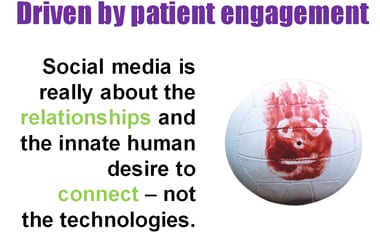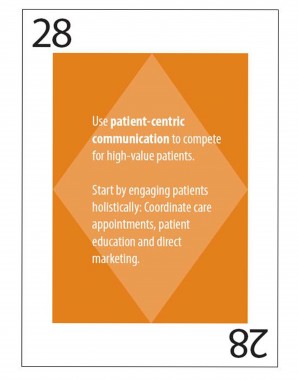Hospital Community Relations Directors Evolve to Chief Marketing Officers
 With so many patient-facing changes in healthcare these days, it’s no surprise the role of the hospital community relations director is also changing. Once focused primarily on communications, advertising and outreach, today’s community relations directors now drive patient experience, hospital strategy and business development.
With so many patient-facing changes in healthcare these days, it’s no surprise the role of the hospital community relations director is also changing. Once focused primarily on communications, advertising and outreach, today’s community relations directors now drive patient experience, hospital strategy and business development.
Maybe the person who manages community relations at your hospital has a new title, maybe not. Regardless, the purview of the position has expanded. At Dobies Health Marketing, we see three core responsibilities for hospital marketing officers:
- Drive the patient experience. Today’s hospital marketing officers own the patient experience. They take a lead role in creating loyalty and repositioning the patient at the center of the hospital’s delivery system.
- Develop overall business strategy. In addition to increasing market share, hospital marketing officers are now responsible for new business and program development to enhance the hospital’s competitive advantage.
- Nurture the system of care. Now more than ever, it’s important to be proactive rather than reactive in creating and nurturing an emerging system of care. Working with leadership on service line, physician engagement and system of care issues has become a routine function.
Even from this quick summary, it’s easy to see how the role of hospital community relations has evolved far beyond its more traditional PR/promotional functions. That’s why many hospital leaders turn to healthcare marketing specialists who can help them navigate these complexities and grow into the next generation of healthcare.

 Recently, we heard some compelling stories about a client’s brand. We were conducting consumer in-depth interviews (IDIs) to better understand how people make personal healthcare decisions, as well as their perceptions of our client’s brand.
Recently, we heard some compelling stories about a client’s brand. We were conducting consumer in-depth interviews (IDIs) to better understand how people make personal healthcare decisions, as well as their perceptions of our client’s brand. Healthcare consumers are more empowered than ever to choose according to their perceptions, and they know it. As health plans get more flexible in letting people pick providers – and online platforms enable word-of-mouth to cover more ground at faster speeds – the competition to be anyone’s provider of choice is fierce.
Healthcare consumers are more empowered than ever to choose according to their perceptions, and they know it. As health plans get more flexible in letting people pick providers – and online platforms enable word-of-mouth to cover more ground at faster speeds – the competition to be anyone’s provider of choice is fierce. Later this week, I will moderate an interactive panel for
Later this week, I will moderate an interactive panel for 
